LAB services
AIR HANDLERS & TERMINAL UNITS MOCK-UP • Reverberation Test • Curtainwall Test • Wind Tunnel • Psychrometric Test Chamber
Air Handler mock-up
An air handler mock-up assembly is a measurement of sound levels & associated noise generated by the equipment. The mock-up enables the owner and project team to experience the sound levels as they would be in the space. If necessary, to make refinements to the architectural and mechanical elements of the design. In high-rise buildings that typically have floor-level mechanical equipment rooms, it is essential to understand the proposed design’s acoustical ramifications as they relate to compliance with the tenant’s lease agreements.
The mock-up for testing an air handling unit is an assembly consisting of offices adjacent to a mechanical room with AHU typical to the project. In the test, airflow is delivered both at the designed operating conditions and various design airflow percentages. Collecting octave band frequency at peak and average sound pressure levels for each airflow. Test results are then plotted on NC curves to establish the acoustic performance based on NC ratings relative to the project’s design criteria.
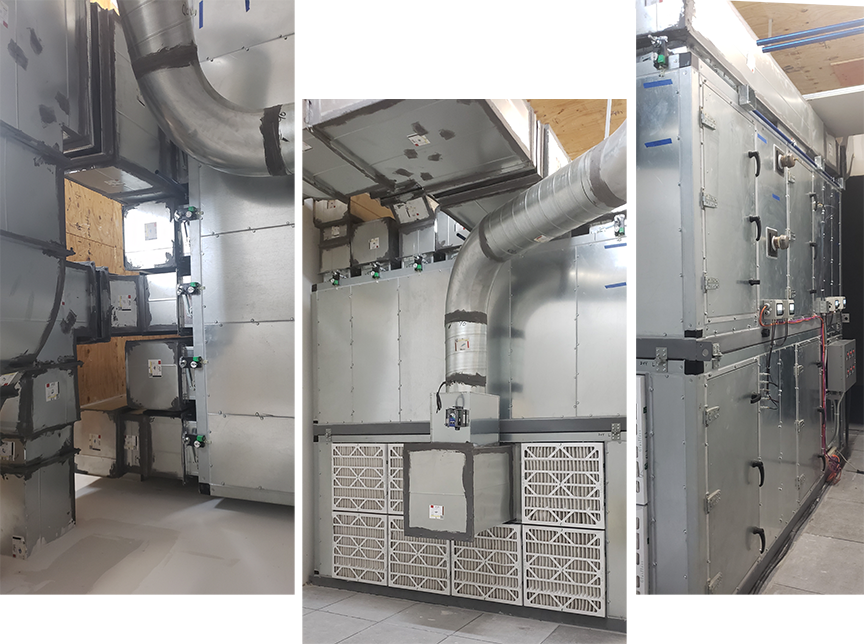

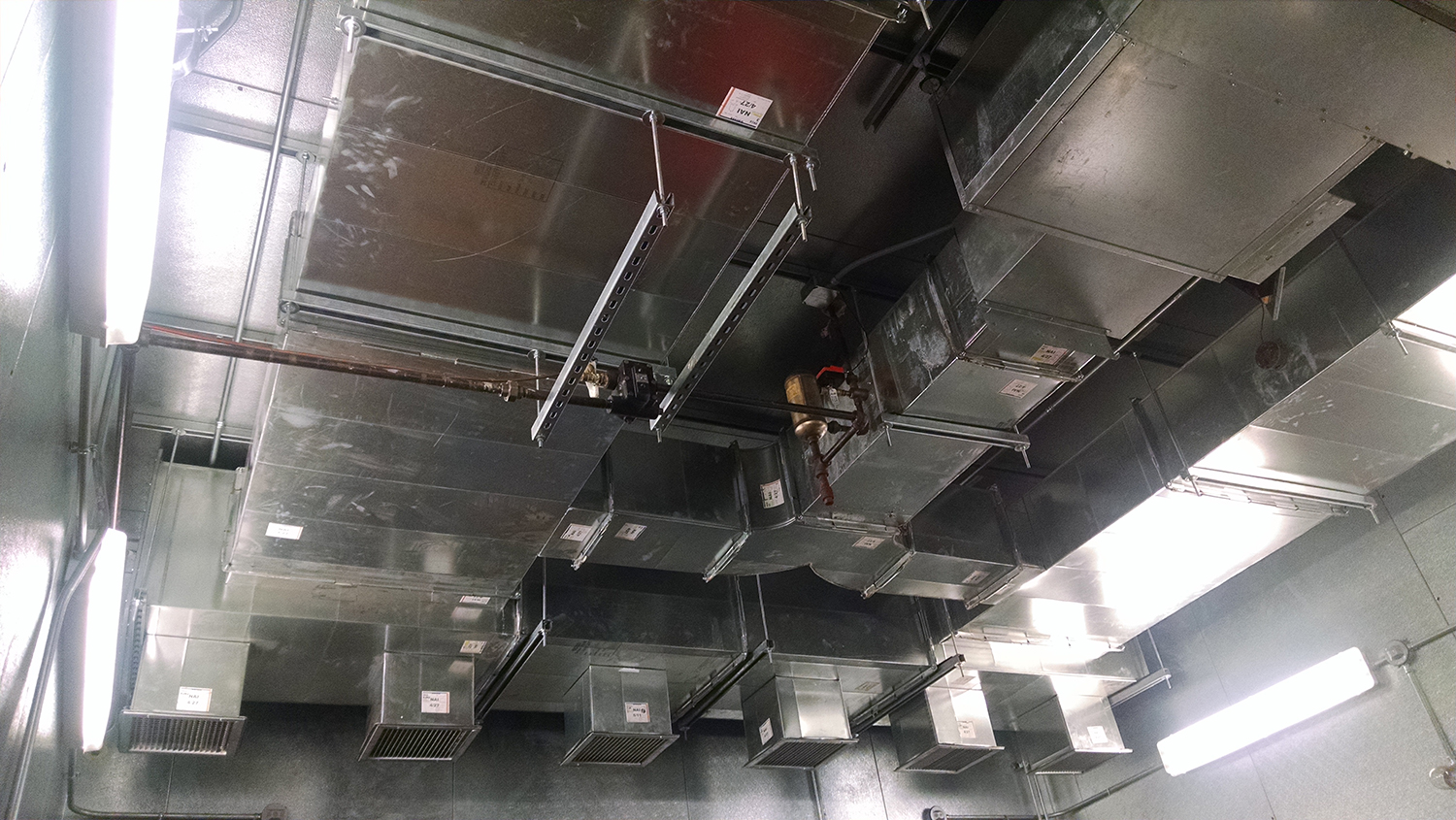

Variable Air Volume terminal unit mock-up
Energistics is a pioneer in Variable Air Volume terminal unit mock-up testing. The VAV terminal unit, duct, & diffuser are all part of the sound measurement collection in a mock-up test. The test results indicate whether the equipment will perform as designed. Manufacturers use mock-up testing to document the performance of their equipment, which can be cataloged or advertised. Consultants use mock-up testing to validate the design.
Reverberation Test
The Energistics’ reverberant room complies with the ANSI SI.31 standard. Reverberation rooms measure “radiated” and “discharge” sound levels. In a radiated test, the lagged ducts connected to the terminal device prevented any sound from escaping. Therefore, the radiated test report’s sound level measurements only the sound emitted from the terminal device. In a discharge test, the terminal device is placed outside the room to measure the discharge sound that would be ducted to the occupied space. Manufacturers typically use reverberant testing as a way to a product’s catalog sound power level. This information allows for a parity comparison of sound levels among several pieces of similar equipment.
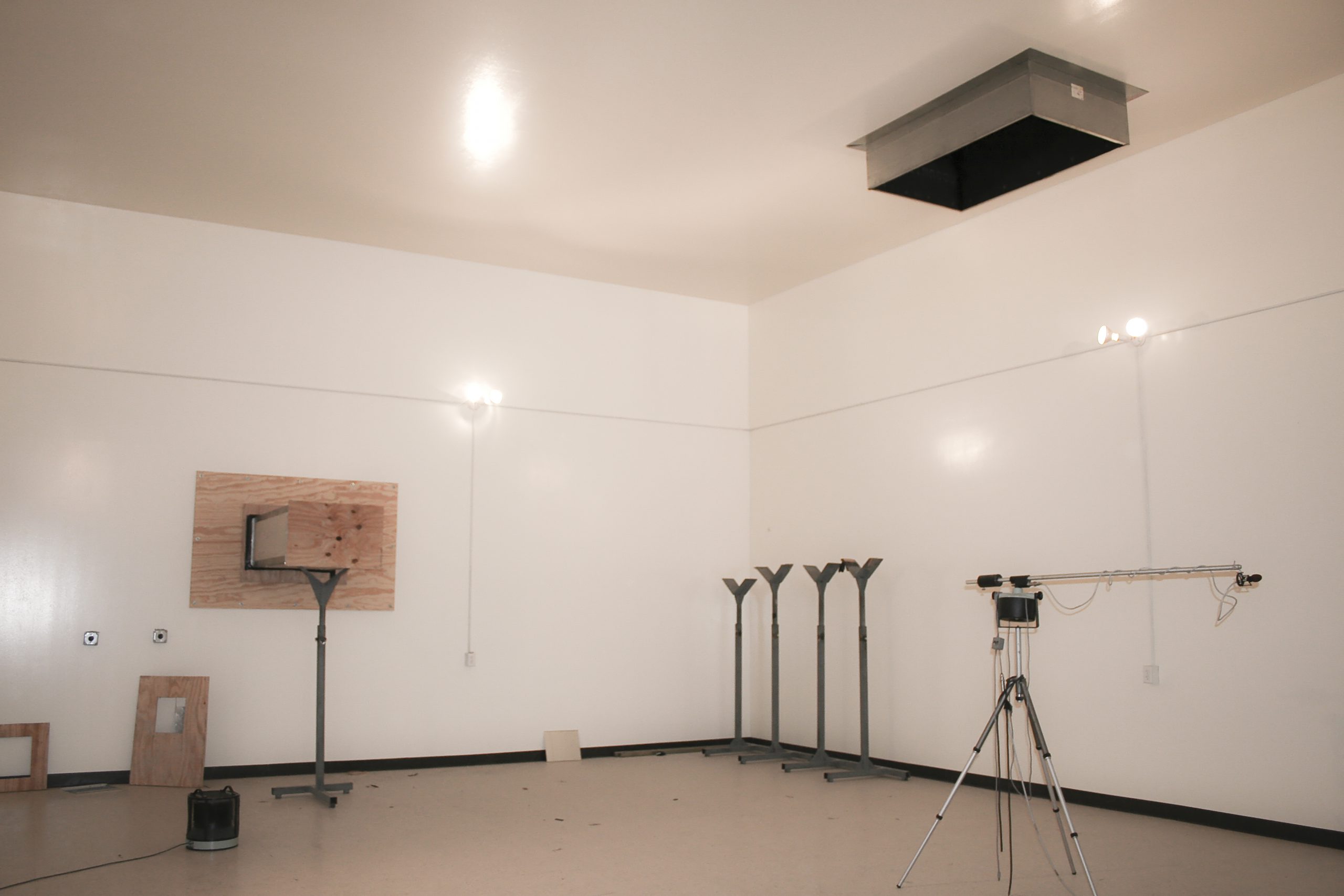

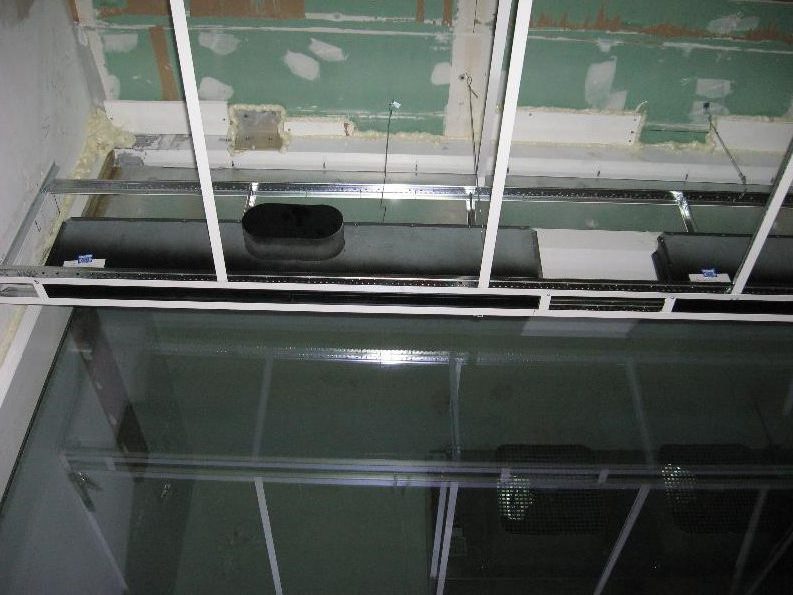

Curtainwall Test
Energistics is the only laboratory in the country that mock-up both the curtain wall and office space of each proposed building design. Our curtain wall assembly mock-up allows up to 20 feet of the projects proposed exterior building wall to be demonstrated. Outdoor temperature differentials envisioned at the project location are simulated and can range from minus 38° F to 120° F. All by monitoring the thermal requirements using the proposed air distribution system operating, the perimeter office space temperatures, velocities, and airflow patterns.
Wind Tunnel
Customers rely on Energistics to meet the testing needs for their ever-changing damper and louver designs utilizing our custom Wind Tunnel. AMCA standard is the test procedure for the US. We can test any louver/damper size up to eight feet wide with airflows to up 140,000 CFM at a pressure up to 20-inch (w.g.) at a temperature rise from ambient to 350°F in a single pass configuration. We can test the pressure drop, operation under heated airflow, thermal linkage check, temperature degradation, high-temperature leakage, thermal shock, cycle time, or bubble-tight leakage, to name a few. We have capabilities to perform cycle testing for ten samples simultaneously to ensure proper operation when it matters. The tunnel stands a towering 12’ tall with ductwork 8’ in diameter.
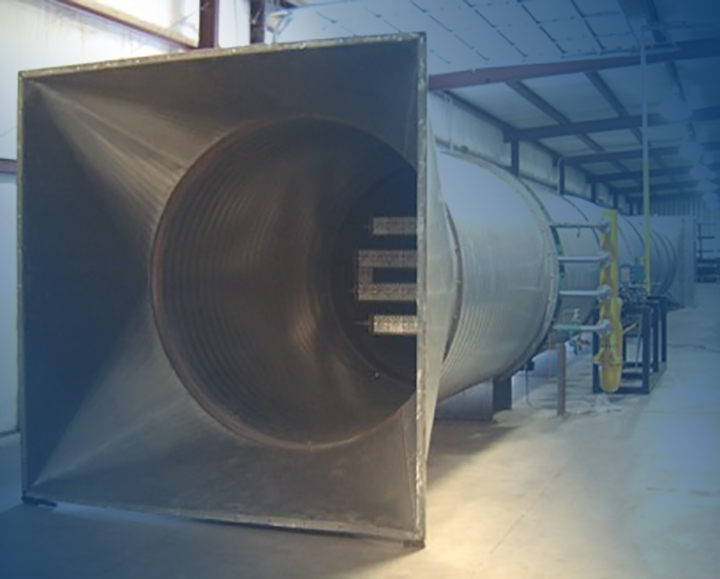

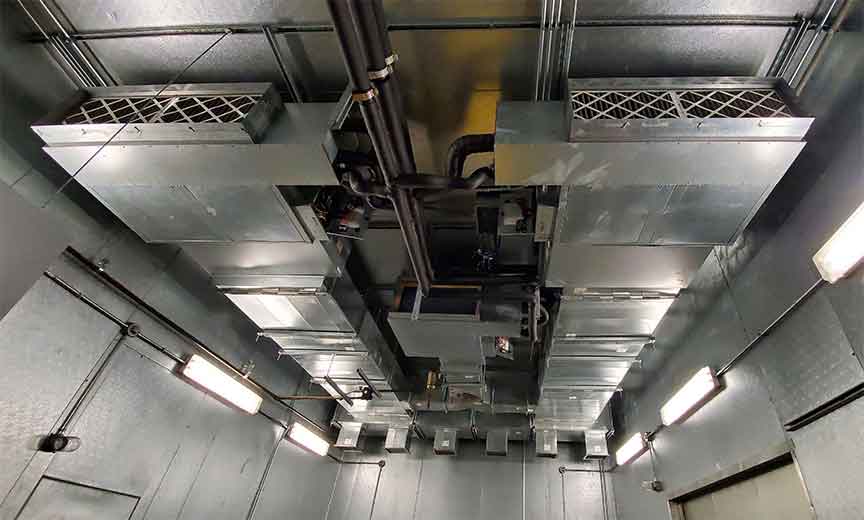

Psychrometric Test Chamber
Are a custom-built room that can create consistent conditions of temperature, humidity, pressure, and airflow. The indoor section duplicates the room-temperature environment inside your home. The chambers are incredibly precise. They can maintain a stable environment within 0.2° F of their intended target and 1% of their humidity target. Utilizing a water skid can also duplicate extreme inlet water conditions through a wide range of temperature or pressure conditions. That consistency is important because researchers monitor the temperature of the air, water, and refrigerant used to cool or heat the air. Airside, waterside, and refrigerant side capacity measurements are all collected at the same time. This output gives you the ability to know the capacity & efficiency given either general or site-specific conditions.
